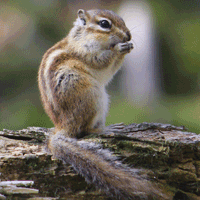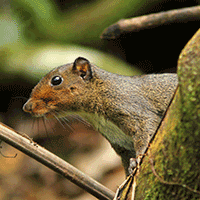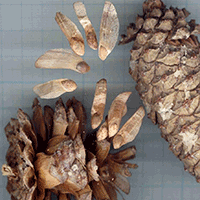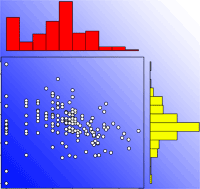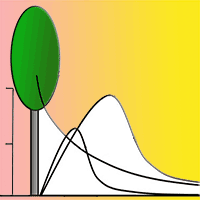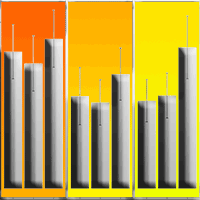Different species of forest trees exhibited great diversity in seed features, and rodents might take different tactics to handle and disperse them. In September 2011, to understand the discriminatory handling by rodents on sympatric seeds, seeds of four plant species, Quercus variabilis, Prunus armeniaca, P. davidiana, and P. persica, were released and tracked in a temperate forest in Yugong area of Jiyuan, Henan, north China. Results showed that: (1) seed removal rates of acorn (Q. variabilis), wild apricot (P. armeniaca) and wild peach (P. davidiana) differed significantly, while almost all (99%) peach seeds (P. persica) remained in situ; (2) acorns (55%) were eaten more than wild apricot (4%) and wild peach (0%), whereas seeds of wild apricot (62%) were scattered-hoarded more than wild peach (13%) and acorns (36%); hull thickness exerted a nonlinear influence on eating and scatter-hoarding; (3) rodents transported wild peach seeds farther (3.81 m ± 2.44 SE) than wild apricot seeds (3.41 m ± 2.05) and acorns (2.49 m ± 2.37); (4) rodents buried multiple wild apricot seeds in some caches, but seeds of wild peach and acorn were stored singly. Results indicated that, for sympatric seeds, rodents would adopt discriminatory processing and storing strategies in eating, burying, dispersal and cache size. Seeds with medium hull thickness were more likely to be dispersed and survived, and consequently have higher probability of future germination and seedling establishment.
Keywords
, , , , ,
Citation
Zhang Y-F, Wang C, Tian S-L, Lu J-Q (2014). Dispersal and hoarding of sympatric forest seeds by rodents in a temperate forest from northern China. iForest 7: 70-74. - doi: 10.3832/ifor1032-007
Academic Editor
Massimo Faccoli
Paper history
Received: May 01, 2013
Accepted: Sep 07, 2013
First online: Nov 18, 2013
Publication Date: Apr 02, 2014
Publication Time: 2.40 months
© SISEF - The Italian Society of Silviculture and Forest Ecology 2014
Open Access
This article is distributed under the terms of the Creative Commons Attribution-Non Commercial 4.0 International (https://creativecommons.org/licenses/by-nc/4.0/), which permits unrestricted use, distribution, and reproduction in any medium, provided you give appropriate credit to the original author(s) and the source, provide a link to the Creative Commons license, and indicate if changes were made.

Breakdown by View Type
(Waiting for server response...)
Article Usage
Total Article Views: 54109
(from publication date up to now)
Breakdown by View Type
HTML Page Views: 44635
Abstract Page Views: 3445
PDF Downloads: 4471
Citation/Reference Downloads: 37
XML Downloads: 1521
Web Metrics
Days since publication: 4414
Overall contacts: 54109
Avg. contacts per week: 85.81
Article Citations
Article citations are based on data periodically collected from the Clarivate Web of Science web site
(last update: Mar 2025)
Total number of cites (since 2014): 11
Average cites per year: 0.85
Publication Metrics
by Dimensions ©
Articles citing this article
List of the papers citing this article based on CrossRef Cited-by.
(1)
Abe H, Matsuki R, Ueno S, Nashimoto M, Hasegawa M (2006)Dispersal of
Camellia japonica seeds by
Apodemus speciosus revealed by maternity analysis of plants and behavioral observation of animal vectors. Ecological Research 21: 732-740.
CrossRef |
Gscholar
(2)
Boman JS, Casper BB (1995)Differential postdispersal seed predation in disturbed and intact temperate forest. American Midland Naturalist 134: 107-116.
CrossRef |
Gscholar
(3)
Cao L, Xiao Z, Guo C, Chen J (2011)Scatter-hoarding rodents as secondary seed dispersers of a frugivore-dispersed tree
Scleropyrum wallichianum in a defaunated Xishuangbanna tropical forest, China. Integrative Zoology 6: 227-234.
CrossRef |
Gscholar
(4)
Carlo TA, Campos Arceiz A, Steele MA, Xiong W (2011)Frugivory and seed dispersal: integrating patterns, mechanisms and consequences of a key animal-plant interaction. Integrative Zoology 6: 165-167.
CrossRef |
Gscholar
(5)
Chambers JC (2010)Pinus monophylla establishment in an expanding
Pinus-Juniperus woodland: environmental conditions, facilitation and interacting factors. Journal of Vegetation Science 12: 27-40.
CrossRef |
Gscholar
(6)
Chen F, Chen J (2011)Dispersal syndrome differentiation of
Pinus armandii in southwest China: key elements of a potential selection mosaic. Acta Oecologica 37: 587-593.
CrossRef |
Gscholar
(7)
González-Rodríguez V, Villar R (2012)Post-dispersal seed removal in four Mediterranean oaks: species and microhabitat selection differ depending on large herbivore activity. Ecological Research 27: 587-594.
CrossRef |
Gscholar
(8)
Gutiérrez-Granados G (2011)Effect of logging on rodent scatter-hoarding dynamics in tropical forests: implications for plant recruitment. Integrative Zoology 6: 74-80.
CrossRef |
Gscholar
(9)
Hadj-Chikh LZ, Steele MA, Smallwood PD (1996)Caching decisions by grey squirrels: a test of the handling time and perishability hypotheses. Animal Behaviour 52: 941-948.
CrossRef |
Gscholar
(10)
Heleno R, Blake S, Jaramillo P, Traveset A, Vargas P, Nogales M (2011)Frugivory and seed dispersal in the Galápagos: what is the state of the art? Integrative Zoology 6: 110-129.
CrossRef |
Gscholar
(11)
Hollander JL, Vander Wall SB (2004)Effectiveness of six species of rodents as dispersers of singleleaf piñon pine (
Pinus monophylla). Oecologia 138: 57-65.
CrossRef |
Gscholar
(12)
Howe HF (1989)Scatter- and clump-dispersal and seedling demography: hypothesis and implications. Oecologia 79: 417-426.
CrossRef |
Gscholar
(13)
Inouye RS, Byers GS, Brown JH (1980)Effects of predation and competition on survivorship, fecundity, and community structure of desert annuals. Ecology 61: 1344-1351.
CrossRef |
Gscholar
(14)
Jacobs LF (1992)The effect of handling time on the decision to cache by grey squirrels. Animal Behaviour 43: 522-524.
CrossRef |
Gscholar
(15)
Jansen PA, Forget P-M (2001)Scatter-hoarding rodents and tree regeneration. In: “Nouragues: dynamics and plant-animal interactions in a Neotropical Rainforest” (Bongers F, Charles- Dominique P, Forget P-M, Théry M eds). Kluwer Academic Publishers, Dordrecht, The Netherlands, pp. 275-288.
Gscholar
(16)
Li H, Zhang Z (2003)Effect of rodents on acorn dispersal and survival of the Liaodong oak (
Quercus liaotungensis Koidz.). Forest Ecology and Management 176: 387-396.
CrossRef |
Gscholar
(17)
Lima SL, Dill LM (1990)Behavioral decisions made under the risk of predation: a review and prospectus. Canadian Journal of Zoology 68: 619-640.
CrossRef |
Gscholar
(18)
Lima SL, Valone TJ (1986)Influence of predation risk on diet selection: a simple example in the grey squirrel. Animal Behaviour 34: 536-544.
CrossRef |
Gscholar
(19)
Longland WS, Clements C (1995)Use of fluorescent pigments in studies of seed caching by rodents. Journal of Mammalogy 76: 1260-1266.
CrossRef |
Gscholar
(20)
Lu J, Zhang Z (2005)Food hoarding behaviour of large field mouse Apodemus peninsulae. Acta Theriologica 50: 51-58.
CrossRef |
Gscholar
(21)
Ma QL, Zhao XF, Sun MY, Lu JQ, Kong MC (2010)Seasonal variations of wild apricot seed dispersal and hoarding by rodents in rehabilitated land. Chinese Journal of Applied Ecology 21: 1238-1243. [in Chinese with English abstract]
Gscholar
(22)
Mack AL (1998)An advantage of large seed size: tolerating rather than succumbing to seed predators. Biotropica 30: 604-608.
CrossRef |
Gscholar
(23)
Meng L, Gao X, Chen J, Martin K (2012)Spatial and temporal effects on seed dispersal and seed predation of
Musa acuminata in southern Yunnan, China. Integrative Zoology 7: 30-40.
Online |
Gscholar
(24)
Moles AT, Warton DI, Westoby M (2003)Do small-seeded species have higher survival through seed predation than large-seeded species? Ecology 84: 3148-3161.
CrossRef |
Gscholar
(25)
Muñoz A, Bonal R, Espelta JM (2012)Responses of a scatter-hoarding rodent to seed morphology: links between seed choices and seed variability. Animal Behaviour 84: 1435-1442.
CrossRef |
Gscholar
(26)
Nilsson SG (1985)Ecological and evolutionary interactions between reproduction of beech Fagus silvatica and seed eating animals. Oikos 44: 157-164.
CrossRef |
Gscholar
(27)
Price MW, Jenkins SH (1986)Rodents as seeds consumers and dispersers. In: “Seed Dispersal” (Murray DR ed). Academic Press, Sydney, Australia, pp. 191-235.
Gscholar
(28)
Puan CL, Goldizen AW, Zakaria M, Hafidzi MN, Baxter GS (2011)Relationships among rat numbers, abundance of oil palm fruit and damage levels to fruit in an oil palm plantation. Integrative Zoology 6: 30-40.
CrossRef |
Gscholar
(29)
Reichman OJ (1979)Desert granivore foraging and its impact on seed densities and distributions. Ecology 60: 1086-1092.
CrossRef |
Gscholar
(30)
Rusch UD, Midgley JJ, Anderson B (2013)Rodent consumption and caching behaviour selects for specific seed traits. South African Journal of Botany 84: 83-87.
CrossRef |
Gscholar
(31)
Schupp EW, Fuentes M (1995)Spatial patterns of seed dispersal and the unification of plant population ecology. Ecoscience 2: 267-275.
Gscholar
(32)
Shimada T (2001)Hoarding behaviors of two wood mouse species: different preference for acorns of two Fagaceae species. Ecological Research 16: 127-133.
CrossRef |
Gscholar
(33)
Sivy KJ, Ostoja SM, Schupp EW, Durham S (2011)Effects of rodent species, seed species, and predator cues on seed fate. Acta Oecologica 37: 321-328.
CrossRef |
Gscholar
(34)
Smallwood PD, Steele MA, Faeth SH (2001)The ultimate basis of the caching preferences of rodents, and the oak-dispersal syndrome: tannins, insects, and seed germination. American Zoologist 41: 840-851.
CrossRef |
Gscholar
(35)
Smith CC, Reichman OJ (1984)The evolution of food caching by birds and mammals. Annual Review of Ecology and Systematics 15: 329-351.
CrossRef |
Gscholar
(36)
Steele MA, Hadj-Chikh LZ, Hazeltine J (1996)Caching and feeding decisions by
Sciurus carolinensis: responses to weevil-infested acorns. Journal of Mammalogy 77: 305-314.
CrossRef |
Gscholar
(37)
Sun SC, Chen LZ (2000)Seed demography of
Quercus liaotungensis in Dongling Mountain region. Acta Phytoecologica Sinica 24: 215-221. [in Chinese with English abstract]
Gscholar
(38)
Vander Wall SB (1990)Food hoarding in animals. University of Chicago Press, Chicago, USA.
Gscholar
(39)
Vander Wall SB (1993a)A model of caching depth: implications for scatter-hoarders and plant dispersal. American Naturalist 141: 217-232.
CrossRef |
Gscholar
(40)
Vander Wall SB (1993b)Cache site selection by chipmunks (
Tamias spp.) and its influence on the effectiveness of seed dispersal in Jeffrey pine (
Pinus jeffreyi). Oecologia 96: 246-252.
CrossRef |
Gscholar
(41)
Vander Wall SB (2001)The evolutionary ecology of nut dispersal. The Botanical Review 67: 74-117.
CrossRef |
Gscholar
(42)
Vander Wall SB (2003)Effects of seed size of wind-dispersed pines (
Pinus) on secondary seed dispersal and the caching behavior of rodents. Oikos 100: 25-34.
CrossRef |
Gscholar
(43)
Vieira EM, Pizo MA, Izar P (2003)Fruit and seed exploitation by small rodents of the Brazilian Atlantic forest. Mammalia 67: 1-7.
CrossRef |
Gscholar
(44)
Xiao Z, Jansen PA, Zhang Z (2006)Using seed-tagging methods for assessing post-dispersal seed fate in rodent-dispersed trees. Forest Ecology and Management 223: 18-23.
CrossRef |
Gscholar
(45)
Xiao Z, Zhang Z, Wang Y (2004)Impacts of scatter-hoarding rodents on restoration of oil tea
Camellia oleifera in a fragmented forest. Forest Ecology and Management 196: 405-412.
CrossRef |
Gscholar
(46)
Xiao Z, Zhang Z, Wang Y (2005)Effects of seed size on dispersal distance in five rodent-dispersed fagaceous species. Acta Oecologica 28: 221-229.
CrossRef |
Gscholar
(47)
Yang Y, Yi X, Niu K (2012)The effects of kernel mass and nutrition reward on seed dispersal of three tree species by small rodents. Acta Ethologica 15: 1-8.
CrossRef |
Gscholar
(48)
Yi X, Steele MA, Zhang Z (2012)Acorn pericarp removal as a cache management strategy of the siberian chipmunk,
Tamias sibiricus. Ethology 118: 87-94.
CrossRef |
Gscholar
(49)
Yi X, Zhang Z (2008)Seed predation and dispersal of glabrous filbert (
Corylus heterophylla) and pilose filbert (
Corylus mandshurica) by small mammals in a temperate forest, northeast China. Plant Ecology 196: 135-142.
CrossRef |
Gscholar
(50)
Zhang H, Cheng J, Xiao Z, Zhang Z (2008)Effects of seed abundance on seed scatter-hoarding of Edward’s rat (
Leopoldamys edwardsi Muridae) at the individual level. Oecologia 158: 57-63.
CrossRef |
Gscholar
(51)
Zhang H, Zhang Z (2008)Endocarp thickness affects seed removal speed by small rodents in a warm-temperate broad-leafed deciduous forest, China. Acta Oecologica 34: 285-293.
CrossRef |
Gscholar
(52)
Zhang Z, Wang F (2001)Effect of burial on acorn survival and seedling recruitment of Liaodong oak (
Quercus liaotungensis) under rodent predation. Acta Theriologica Sinica 21: 35-43. [in Chinese with English abstract]
Gscholar
(53)
Zhao X, Lu J, Qiao W, Tang F (2009)Dispersal and hoarding on acorns of
Quercus variabilis by rodents in different habitats. Acta Theriologica Sinica 29: 160-166. [in Chinese with English abstract]
CrossRef |
Gscholar


